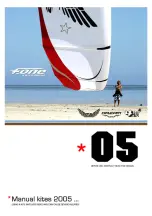
Page 11
Pilot’s Operating Manual
Revision A1: Nov, 2002
Hawker 800XP Pro Line 21
Section VII - SAFETY INFORMATION
The pilot must be completely familiar with the performance of the airplane and performance data in the
Checklist and FAA Approved Airplane Flight Manual. The resultant effect of temperature and pressure
altitude must be taken into account in performance. An applicable FAA Approved Airplane Flight Manual
must be aboard the airplane at all times, including the weight and balance forms and equipment list.
PASSENGER SAFETY PROCEDURES GUIDES
Raytheon Aircraft Company has available, for your airplane, Passenger Safety Procedures Guides
which contain important information on the proper use of restraint systems, oxygen masks, emergency
exits and emergency bracing procedures. Passenger Safety Procedures Guides may be obtained from
TMDC. A pilot should not only be familiar with the information contained in these guides, but should,
prior to flight, always inform the passengers of the information contained therein. The pilot must orally
brief the passengers on the proper use of restraint systems, doors and emergency exits, and other
emergency procedures, as required by 14 CFR Part 91.
STOWAGE OF ARTICLES
Airplane seats are designed to absorb energy in a downward direction. In order to accomplish this
action, the space between the seat pan and the floor is utilized to provide space for seat displacement.
If hard, solid objects are stored beneath seats, the energy absorbing feature is lost and severe spinal
injuries can occur to occupants.
Prior to flight, pilots should assure that articles are not stowed beneath seats that would restrict seat
pan energy absorption or penetrate the seat in event of a high vertical velocity accident.
Ensure that cargo and baggage is stowed and properly secured with tie-down straps and cargo nets.
FLIGHT OPERATIONS
General
The pilot MUST be thoroughly familiar with all information published by the manufacturer concerning
the airplane, and is required by law to operate the airplane in accordance with the FAA Approved
Airplane Flight Manual and placards installed.
Preflight Inspection
In addition to maintenance inspections and preflight information required by 14 CFR Part 91, a
complete, careful preflight inspection is imperative. Each airplane has a checklist for the preflight
inspection which must be followed. USE THE CHECKLIST.
Weight and Balance
Maintaining center of gravity within the approved envelope throughout the planned flight is an important
safety consideration.
The airplane must be loaded so as not to exceed the weight and center of gravity (C.G.) limitations.
Airplanes that are loaded above the maximum take-off or landing weight limitations will have an overall
lower level of performance compared to that shown in the Performance section of the Pilot’s Operating
Manual and the FAA Approved Airplane Flight Manual. If loaded above maximum take-off weight, take-
off distance and the landing distance will be longer than that shown in the Performance section; the
stalling speed will be higher, rate of climb, cruising speed, and the range of the airplane at any level of
fuel will all be lower than shown in the Performance section.
















































